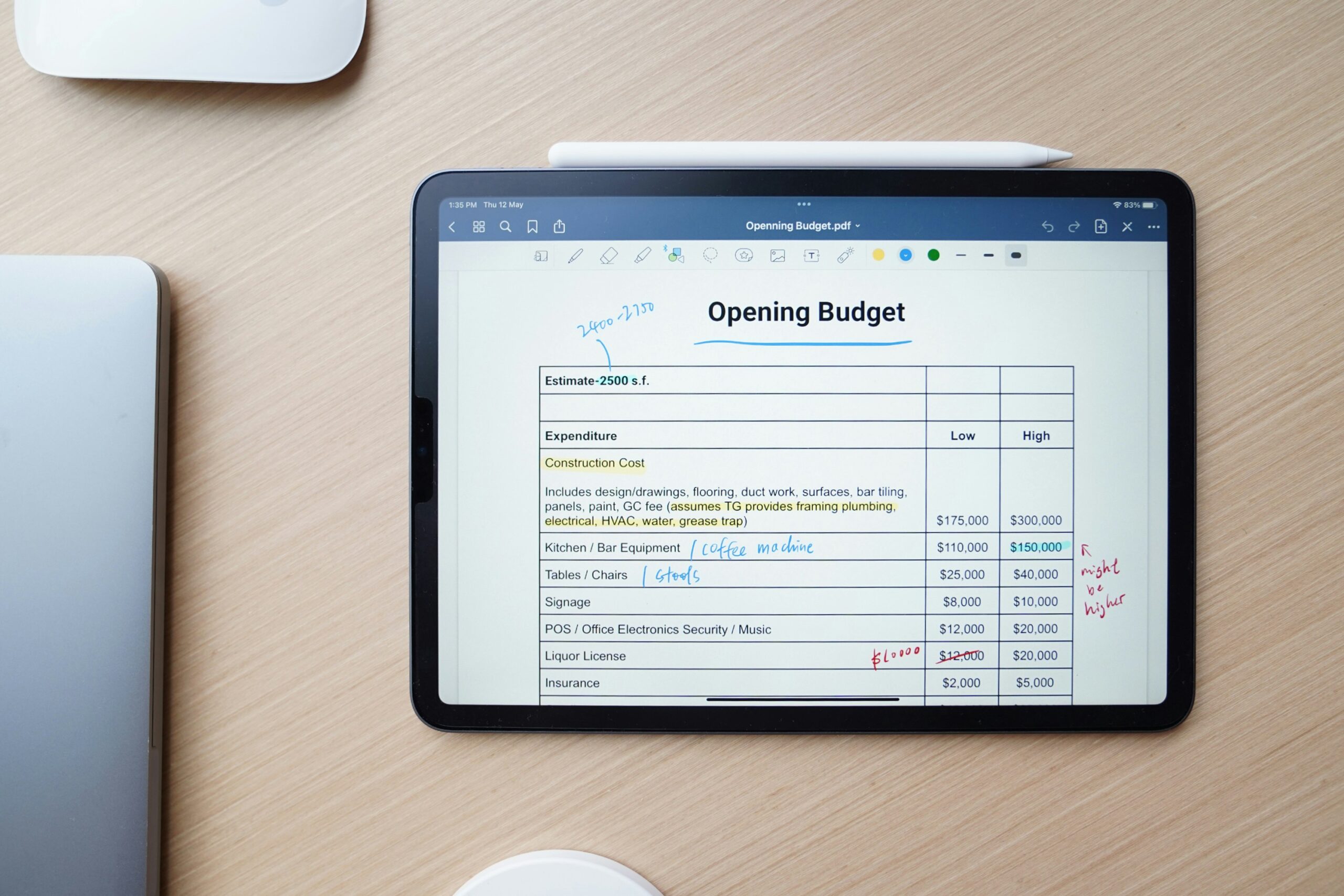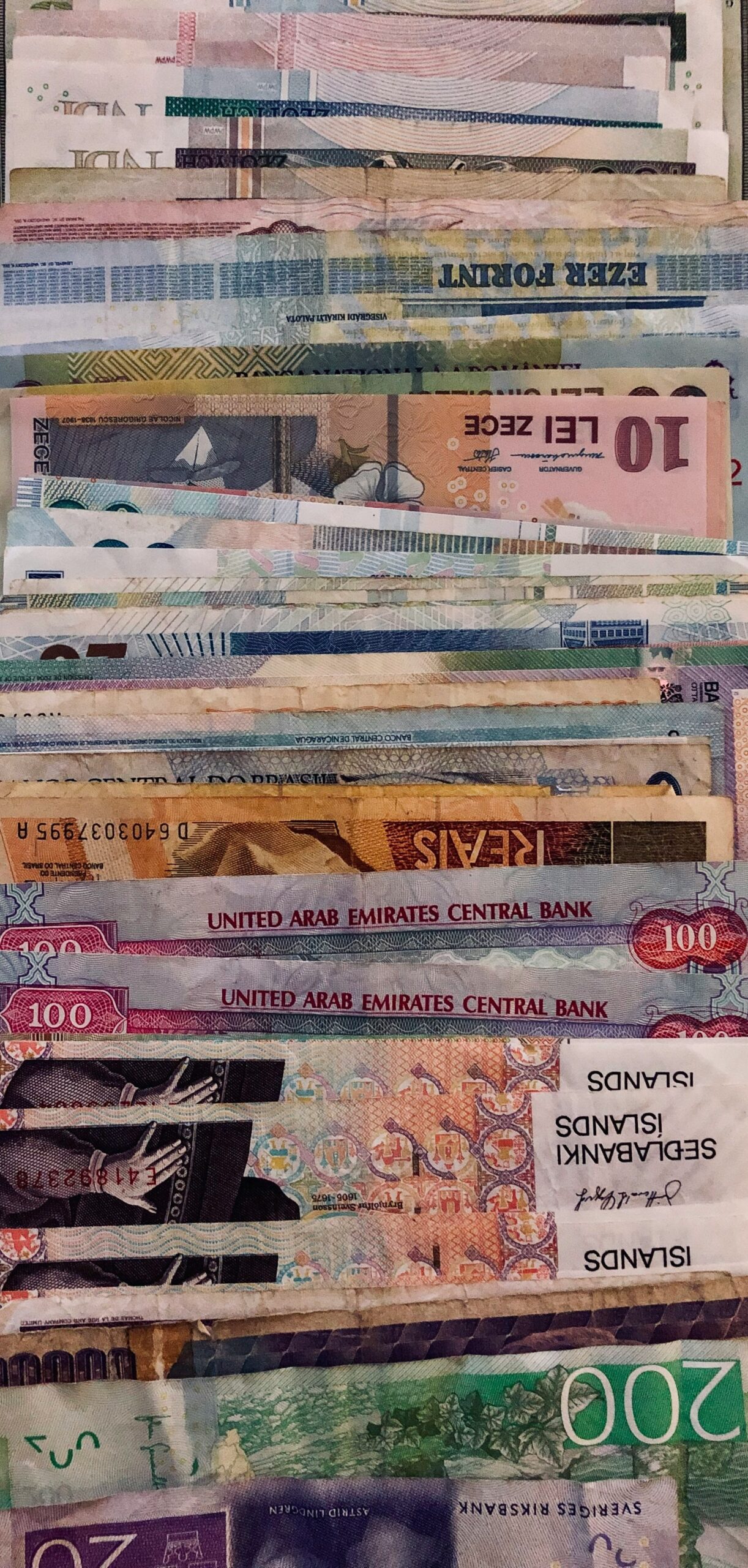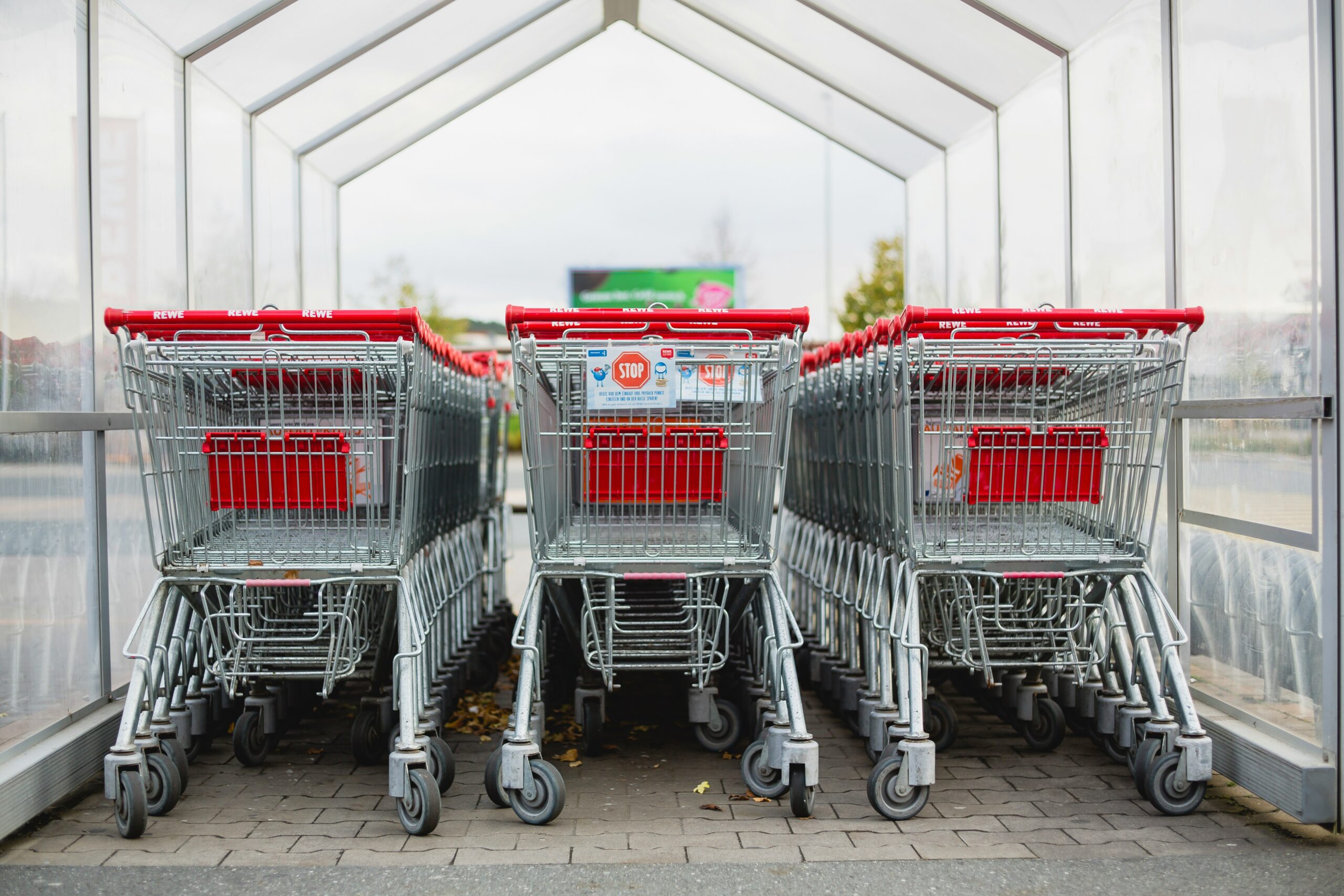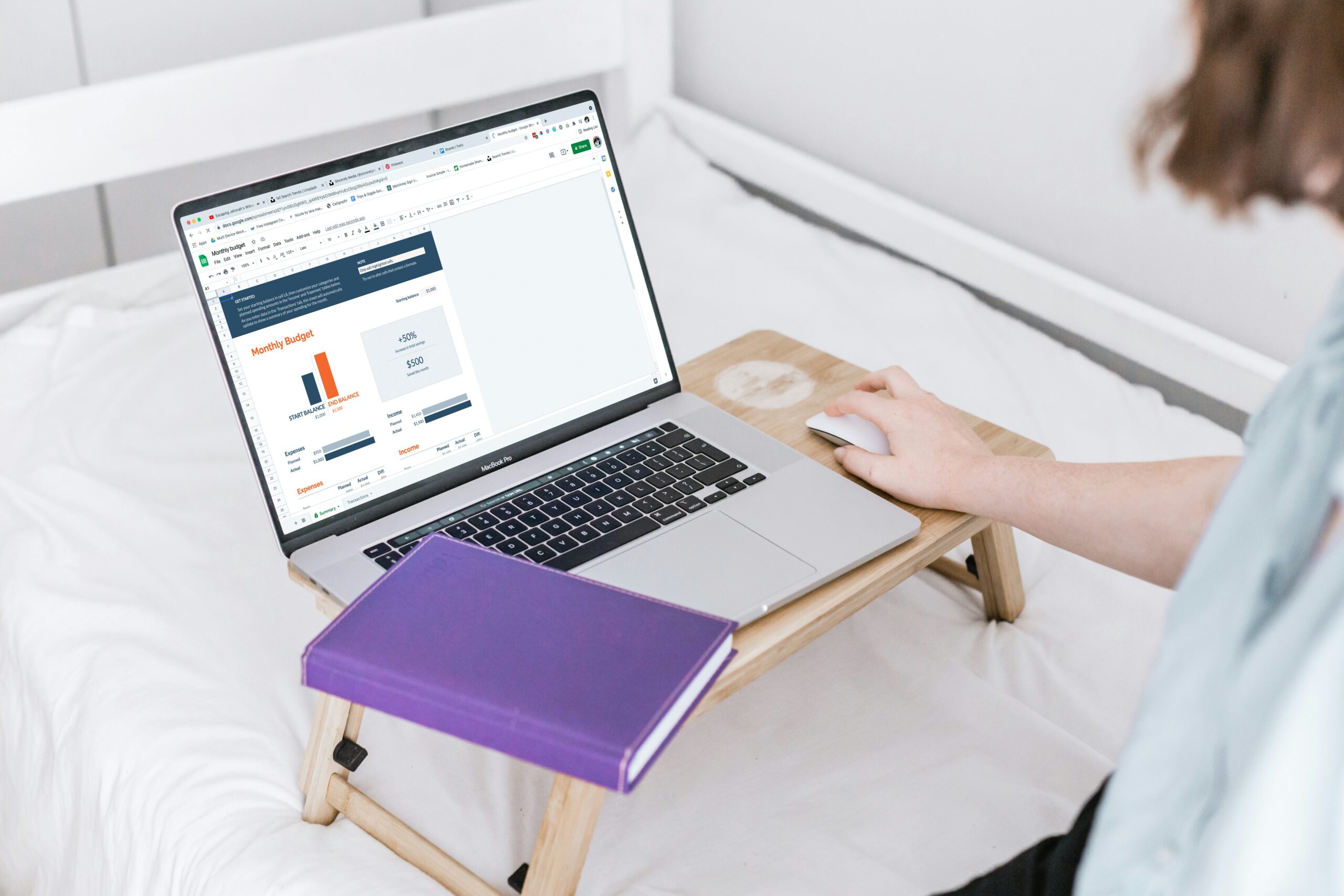Your cart is currently empty!

The Benefits of Using a Budgeting App
Introduction to Budgeting Apps
In the evolving landscape of personal finance, budgeting apps have emerged as indispensable tools for managing finances effectively. These applications, designed to help users track their income, expenses, and overall financial health, have seen significant evolution since their inception. Initially, budgeting required manual entry in spreadsheets or even handwritten ledgers, which were prone to errors and time-consuming updates.
The advent of digital technology brought about the first wave of budgeting software in the 1990s, which primarily targeted desktop users. These early tools, while useful, lacked the user-friendly interfaces and real-time syncing capabilities we see today. The development of mobile technology and the rise of smartphones in the late 2000s marked a pivotal shift. Budgeting apps became more accessible, interactive, and intuitive, allowing users to manage their finances on-the-go.
Today, budgeting apps are more than just digital ledgers. They integrate with bank accounts, credit cards, and other financial tools to provide a comprehensive view of one’s financial status. Features such as automatic transaction categorization, budget setting, and financial goal tracking have made them incredibly popular. Moreover, the user-friendly design and ease of access have broadened their appeal, making them relevant to a wide demographic, from young professionals to retirees.
In the context of the digital age, the importance of budgeting apps cannot be overstated. They offer real-time updates, ensuring that users have up-to-date information at their fingertips. Additionally, the integration of advanced analytics and personalized financial advice has transformed budgeting apps into powerful allies in personal finance management. As financial technology continues to evolve, budgeting apps are likely to become even more sophisticated, further embedding themselves as crucial tools in our daily financial routines.
Ease of Tracking Expenses
Budgeting apps have revolutionized the way individuals manage their finances, making it remarkably simple to track daily, weekly, and monthly expenses. One of the standout features of these apps is their ability to automatically categorize spending. By linking your bank accounts and credit cards, the app can sort transactions into predefined categories such as groceries, entertainment, and utilities. This automation eliminates the need for manual entry, saving time and reducing the likelihood of human error.
Real-time updates are another crucial advantage of using budgeting apps. As transactions occur, they are instantly recorded and categorized, providing users with up-to-date information on their spending patterns. This immediate feedback helps users make informed financial decisions, preventing overspending and promoting mindful budgeting. Additionally, many apps offer the capability to set up alerts and notifications for various financial activities, such as exceeding a budget limit or an upcoming bill payment, further enhancing financial awareness and control.
The synchronization of budgeting apps with bank accounts and credit cards is a game-changer for financial tracking. This feature ensures that all financial data is consolidated in one place, giving users a comprehensive overview of their financial status. With easy access to this information, users can identify trends in their spending habits, adjust their budgets accordingly, and plan for future expenses with greater accuracy.
Overall, the ease of tracking expenses through budgeting apps empowers users to stay informed about their financial health. By leveraging automatic categorization, real-time updates, and seamless integration with financial accounts, these apps provide a streamlined, efficient way to manage personal finances. This not only simplifies the budgeting process but also fosters better financial habits, enabling users to achieve their financial goals more effectively.
Setting and Achieving Financial Goals
Budgeting apps have revolutionized the way individuals manage their finances, particularly when it comes to setting and achieving financial goals. Whether users aim to save for a vacation, pay off debt, or build an emergency fund, these apps provide a comprehensive suite of tools designed to facilitate goal-specific savings plans and monitor progress effectively.
One of the primary features of budgeting apps that aids in goal setting is the goal creation tool. Users can specify their financial targets, such as the amount they wish to save and the timeline for achieving it. This personalization ensures that each financial goal is tailored to the user’s unique needs and circumstances. Once a goal is established, the app can break it down into manageable increments, making the process less daunting and more achievable.
Another significant benefit of using budgeting apps is the ability to track progress in real-time. These apps offer visual representations such as graphs and charts, allowing users to see how close they are to reaching their goals. This not only provides motivation but also helps users make informed decisions about their spending and saving habits. For instance, if someone is falling behind on their savings target, the app can suggest adjustments to their budget to get back on track.
In addition to tracking progress, many budgeting apps include features that automate savings. For example, some apps can round up purchases to the nearest dollar and transfer the difference into a savings account. Others allow users to set up automatic transfers from their checking account to their savings account, ensuring consistent progress towards their financial goals without the need for manual intervention.
Moreover, budgeting apps often provide educational resources and tips tailored to individual financial goals. These resources can include articles, videos, and personalized advice, helping users understand best practices for managing their money and achieving their objectives. This educational aspect empowers users with the knowledge needed to make smarter financial decisions.
In summary, budgeting apps offer a range of tools that simplify the process of setting and achieving financial goals. By providing goal creation features, real-time progress tracking, automated savings options, and educational resources, these apps serve as invaluable assets for anyone looking to take control of their financial future.
Consistent use of a budgeting app can significantly contribute to the improvement of financial habits. Budgeting apps are designed with a variety of features that encourage users to become more mindful of their financial choices. One of the primary features is spending alerts. These alerts notify users when they are nearing their budget limits or when unusual spending patterns are detected. Such real-time notifications foster immediate awareness, helping users quickly identify and correct overspending.
Another essential feature is the ability to set budget limits for different categories, such as groceries, entertainment, and transportation. By defining specific limits, users can allocate their resources more effectively and avoid unnecessary expenditures. This structured approach to budgeting helps in establishing a disciplined spending routine, which is crucial for long-term financial health.
Personalized spending reports are another valuable tool provided by budgeting apps. These reports offer detailed insights into spending habits over various periods, such as weekly, monthly, or yearly. By analyzing these reports, users can identify trends and patterns in their spending behavior. This data-driven insight is instrumental in making informed financial decisions and adjusting habits as needed. For instance, if a user notices a recurring overspend in a particular category, they can take proactive measures to curtail it in the future.
Moreover, budgeting apps often include features for setting financial goals, such as saving for a vacation or paying off debt. These goals are broken down into manageable steps, making it easier for users to stay motivated and track their progress. The visual representation of progress towards these goals can be particularly encouraging, reinforcing positive financial behaviors.
In essence, the consistent use of a budgeting app not only aids in tracking expenses but also actively promotes healthier financial habits. By leveraging features like spending alerts, budget limits, and personalized reports, users can develop a more mindful and disciplined approach to managing their finances.
Budgeting apps have revolutionized the way individuals manage their finances by offering enhanced financial awareness. These digital tools provide users with detailed insights into their spending patterns and overall financial health. By compiling and categorizing transactions, budgeting apps give a clear picture of where money is being spent, making it easier to identify areas where one might be overspending or could potentially save.
One of the standout features of budgeting apps is their use of visual tools such as graphs and charts. These graphical representations of financial data help users quickly grasp their financial situation at a glance. For instance, a pie chart can break down monthly expenses into categories like groceries, entertainment, and utilities, highlighting which areas consume the most funds. Similarly, line graphs can track spending trends over time, providing a visual history of financial behavior.
This level of insight is crucial for making informed financial decisions. When users understand their spending habits, they are better equipped to set realistic budgets and financial goals. They can identify unnecessary expenditures and reallocate funds towards savings or debt repayment, thereby improving their overall financial health. Enhanced financial awareness also empowers users to make strategic choices, such as negotiating better deals on recurring expenses or investing surplus funds more wisely.
Moreover, the ability to monitor financial health in real-time allows for immediate adjustments to spending habits. If an unexpected expense arises, users can quickly see its impact on their budget and make necessary changes to stay on track. This proactive approach to financial management helps prevent overspending and reduces the risk of accruing debt.
In summary, budgeting apps offer a comprehensive view of personal finances, utilizing visual aids to simplify complex data. This enhanced financial awareness enables users to make more informed decisions, ultimately leading to better financial stability and growth.
Convenience and Accessibility
One of the primary benefits of using a budgeting app is the unparalleled convenience it offers. With these tools readily accessible on smartphones, tablets, and other devices, users can manage their finances anytime and anywhere. This ease of access ensures that financial management is no longer confined to desktop computers or paper-based methods. Whether you’re commuting, traveling, or simply on-the-go, a budgeting app allows you to stay informed about your financial status.
Having a budgeting tool at your fingertips means that you can quickly and efficiently track expenses, categorize spending, and monitor your budget in real-time. This real-time access is crucial, as it helps users make informed financial decisions on the spot. For instance, if you’re at a store and unsure whether a particular purchase fits within your budget, a quick glance at your budgeting app can provide the necessary clarity.
Furthermore, budgeting apps often come with features like notifications and alerts, which can be customized to suit individual preferences. These alerts can remind users of upcoming bills, low balances, or unusual spending patterns. Such timely reminders are invaluable in preventing overspending and ensuring that users stay on top of their financial obligations.
The convenience of a budgeting app also extends to its integration with other financial tools and services. Many apps can sync with bank accounts, credit cards, and other financial institutions, providing a comprehensive view of one’s financial health. This seamless integration eliminates the need for manual data entry, reducing the likelihood of errors and saving users valuable time.
Overall, the accessibility and convenience of budgeting apps empower users to maintain control over their finances with minimal effort. By providing real-time insights and easy access to financial data, these tools make budgeting a more manageable and less daunting task, ultimately leading to better financial management and peace of mind.
Security and Privacy
When considering the use of a budgeting app, one of the primary concerns often revolves around security and privacy. Reputable budgeting apps understand the importance of safeguarding user data and implement a range of measures to ensure that sensitive information remains protected. One of the fundamental security features these apps offer is encryption. Encryption transforms your data into an unreadable format that can only be deciphered with the correct decryption key, ensuring that your financial information remains confidential and secure during transmission and storage.
Additionally, secure authentication methods are employed to further enhance the safety of your data. Many budgeting apps utilize multi-factor authentication (MFA), which requires users to provide two or more verification factors to gain access. This could include something you know (like a password), something you have (like a smartphone), or something you are (like a fingerprint). By incorporating MFA, budgeting apps add an extra layer of security, making unauthorized access significantly more difficult.
Another vital aspect is the secure handling of linked financial accounts. Reputable budgeting apps use read-only access when connecting to your financial institutions. This means that while the app can view your transaction history and account balances, it cannot make any changes or transactions on your behalf. This read-only access, combined with the use of secure APIs (Application Programming Interfaces), ensures that your financial data remains safe while enabling the app to provide accurate budgeting insights.
Furthermore, many budgeting apps undergo regular security audits and comply with industry standards and regulations, such as the General Data Protection Regulation (GDPR) and the Payment Card Industry Data Security Standard (PCI DSS). These audits and compliance measures provide an additional layer of assurance that the app is committed to maintaining the highest standards of data protection.
In conclusion, while the security and privacy of personal financial information are valid concerns, reputable budgeting apps employ robust security measures, including encryption, secure authentication, and read-only access to financial accounts, to ensure user data remains protected. These measures, along with regular security audits and regulatory compliance, help reassure users about the safety of linking their financial accounts to budgeting apps.
Conclusion: Making the Most of Budgeting Apps
The myriad benefits of using a budgeting app cannot be overstated. From offering real-time tracking of expenses to providing insightful analytics, these digital tools streamline the process of managing personal finances. By automating tedious tasks and offering a comprehensive overview of spending habits, budgeting apps empower users to make informed financial decisions, ultimately fostering a healthier financial lifestyle.
Exploring different budgeting apps is highly recommended, as each app caters to varying needs and preferences. Some apps focus on simplicity and ease of use, while others offer advanced features like investment tracking and debt management. It’s essential to evaluate what specific functionalities are most important to you, such as the ability to set financial goals, sync with bank accounts, or receive personalized financial advice.
To get started with a budgeting app, begin by downloading a few highly-rated options from your app store. Take advantage of free trials to explore their features and interfaces. Once you’ve settled on an app that suits your needs, invest time in setting up your financial profile accurately. Input all income sources, recurring expenses, and financial goals. Consistency is key — regularly update your app with new transactions and review your financial standing periodically.
Maximizing the benefits of a budgeting app involves leveraging its full range of features. Set realistic budgets and monitor your progress, adjusting as necessary to stay on track. Utilize alerts and notifications to remind you of upcoming bills and potential overspending. Many apps also offer educational resources and tips to improve financial literacy, which can be invaluable in making more informed decisions.
In essence, budgeting apps serve as a personal financial assistant, simplifying the complexities of money management. By harnessing the power of these tools, individuals can achieve greater financial control, reduce stress, and ultimately, pave the way to a more secure financial future. Begin your journey today by exploring and integrating a budgeting app that aligns with your financial goals and lifestyle.
Recent Posts
- Mastering Budgeting with Irregular Income: A Comprehensive Guide

- How to Deal with Budget Busters: A Comprehensive Guide

- Mastering the Art of Managing Impulse Purchases: A Comprehensive Guide

- Mastering Your Finances with the 50/30/20 Budgeting Rule

- Budgeting for Clothing: A Comprehensive Guide to Smart Shopping

Categories
Archive
Tags
budget-friendly transportation budgeting Budgeting Tips Clothing Budgeting cost-saving tips Digital Finance Dining Out eco-friendly commuting economics Economic Trends Emergency Fund entertainment expenses ESG Investing financial crisis Financial Independence Financial Management Financial Planning Fintech flexible jobs freelance work Future of Work gig economy Grocery Budgeting higher education Impact Investing Impulse Buying inflation Interest Rates Investing Basics Investment Strategies Irregular Income Market Volatility Meal Planning money management Personal Finance Remote Work Retirement Planning Risk Management Shopping Habits Smart Shopping student loans Sustainable Finance Sustainable Lifestyle Technology workplace productivity

